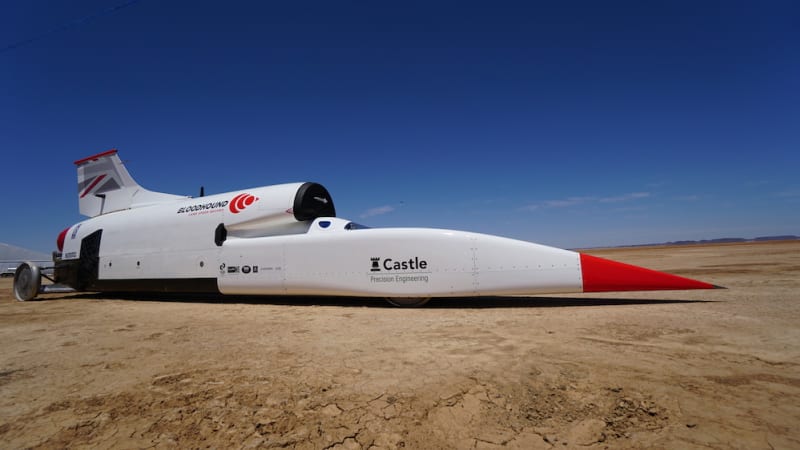Bloodhound arrives in South Africa to undergo speed testing this month
https://ift.tt/33SXVvk

The folks behind the Bloodhound land speed record car have revealed its “desert spec” look as it arrives in the South African desert to begin high-speed testing, ahead of its assault on 1,000 mph next year.
It’s an encouraging development for the ambitious project, which was all but buried late last year before a last-minute infusion of cash kept it alive.
Crews arrived last week at the Hakskeenpan desert in the Northern Cape and helped re-assemble the car, which traveled from Luxembourg to Johannesburg by airfreight. It then traveled the final 570 miles to the desert on the back of a transport truck.
Most notable on the desert spec is the addition of narrower, precision-machined solid aluminum wheels, seen for the first time and built specifically for traveling at supersonic speeds on the desert track. They replace the pneumatic tires the Bloodhound used on a previous test in Newquay, England, and for transport on the tarmac. Tires cannot stand the extreme stresses of high-speed driving.
Filming the lines that our driver and World Land Speed Record holder Andy Green will follow down the desert when we start testing 🎥🛤️🚗 #2019HST pic.twitter.com/hBHmfd4gK3
— Bloodhound LSR (@Bloodhound_LSR) October 21, 2019
Teams will test Bloodhound in South Africa at up to 500 mph or more, building up in 50 mph increments over the next month. One of their main goals is to evaluate how the car reacts when slowing down and stopping from several target speeds, using the wheel brakes, one or both drag parachutes and the giant airbrake locked into position, all to better understand the car’s drag and stopping ability. They’ll use data from 192 pressure sensors and compare it with the predicted computational fluid dynamic models. Determining the amount of drag is necessary to determine what size Rolls-Royce EJ200 jet engine to use with the car on its 1,000-mph attempt in 12 to 18 months’ time.
The 10-mile track, on a dry lakebed, will allow driver Andy Green to apply the throttle for much longer than the 2 seconds it took him to accelerate to 200 mph in Newquay, near Cornwall. Battery-powered remote micro-weather stations will be placed at every kilometer mark along the 16-km track to record wind speed, gust speed, wind direction, temperatures and other metrics over a wireless network.
The roughly 13,670-square-mile area represents the largest area of land ever cleared by hand for a motorsports event, Bloodhound’s team said.
Auto Blog
via Autoblog https://ift.tt/1afPJWx
October 21, 2019 at 12:29PM